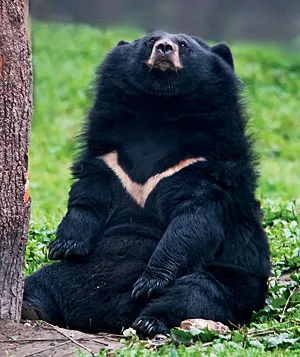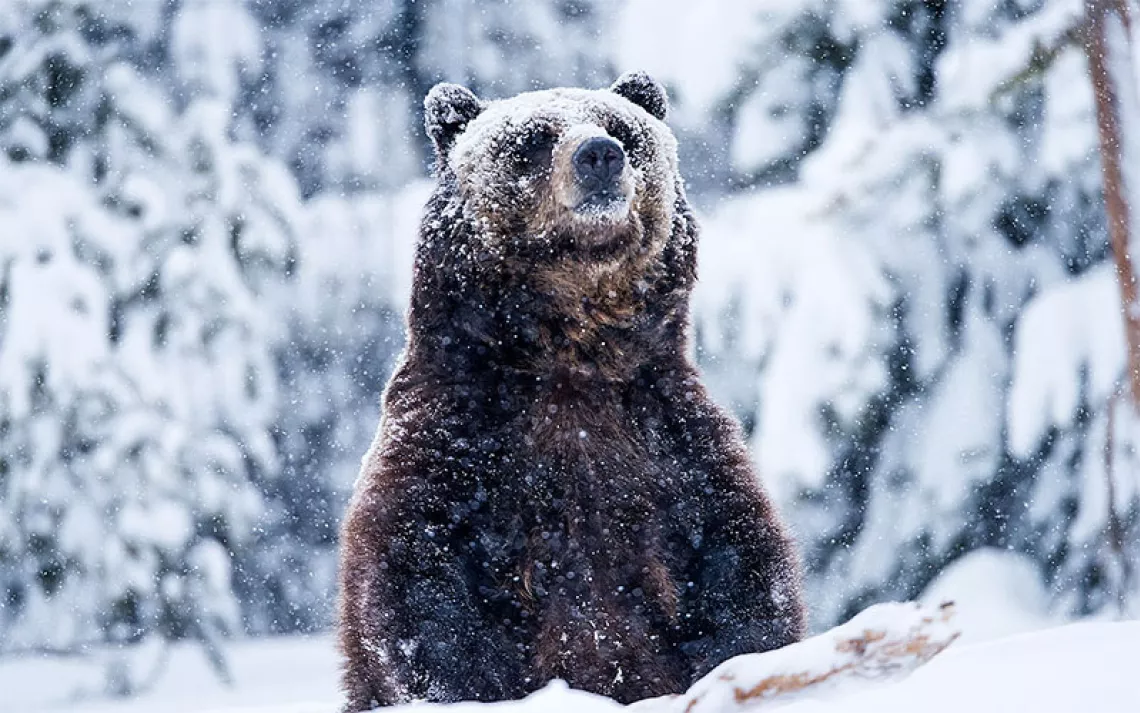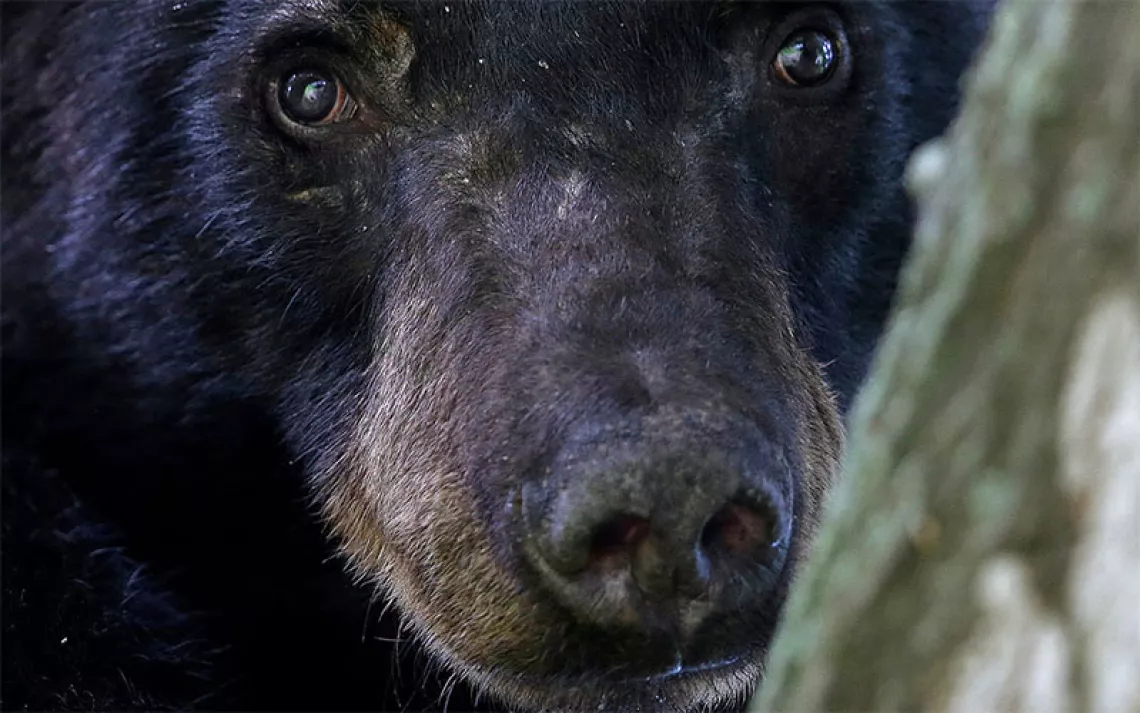Moon Bear
The moon bear's bile fuels a multimillion-dollar industry

The Asiatic black bear (Ursus thibetanus) is known as the "moon bear" for the crescent on its chest. It should be wandering heavily wooded mountains or tropical forests eating fruit, grasses, and honey. But such habitats are rapidly disappearing, and now moon bears are more likely to be found in bear hell: "farms" in China, Vietnam, South Korea, Laos, and Myanmar where thousands of them (China admits to 10,000) are confined to tiny cages with a catheter draining bile from their gall bladder for use in traditional medicine.
Bear farming is now a multimillion-dollar industry. "Cheap, captive-bear bile has brought a lot of new people into the market," says David Garshelis, a research scientist and bear expert at the Minnesota Department of Natural Resources. So now, in addition to fighting fevers and inflammations, bear bile is being used as a health tonic and even a hangover remedy.
China contends that such farms, with their supposedly self-sustaining populations, reduce the poaching of wild bears. Garshelis and the animal welfare organization Animals Asia (which runs the sanctuary in Vietnam where the picture at left was taken) fear that increasing demand will increase poaching as well. The International Union for Conservation of Nature has mandated a study to settle the issue by 2016. Evidence of continued poaching will bring pressure to shut down the bear-bile business—which will likely be even bigger by then.
 The Magazine of The Sierra Club
The Magazine of The Sierra Club



